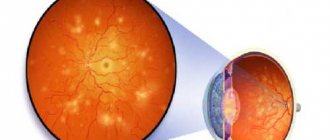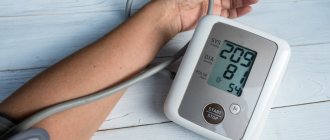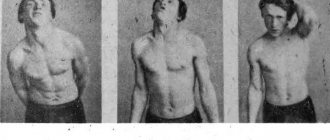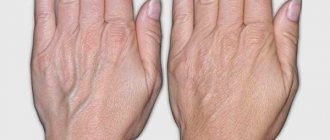Intermittent claudication is one of the most insidious conditions of the body. A person diagnosed with such a disease never knows where and how his own legs will fail. Sharp pain in the hip and the feeling that further steps are impossible are the most common symptoms among those who have encountered this problem. At the same time, it is as capable of unexpectedly letting go as it is of beginning. A number of daily habits influence the development of the problem and its transformation into a chronic form. A timely decision, namely, seeking medical help, following all the recommendations and a course of therapy, will help you forget about the disease.
Mechanism of formation
The development of intermittent claudication (abbreviated as claudication) is based on a group of pathogenetic factors. There are two main points.
Deposition of fatty compounds on the walls of arteries
The result of lipid metabolism disorders. Accompanied by a gradual increase in the main symptoms. According to research, this form of the process occurs most often (up to 90% of situations).
The mechanism is due to some congenital anomalies transmitted with genetic material or acquired problems. Be it a condition after pregnancy, taking certain hormonal drugs and others.
Recovery in this case is almost always medicinal. Surgical treatment is required depending on the situation.
Arterial stenosis
The lumen of the vessels becomes narrow, blood flows much worse through the structure, and cannot sufficiently provide the tissues with oxygen and useful compounds. Usually as a result of smoking, drinking or taking drugs.
The vessels themselves experience enormous overload, wear out and lose elasticity, which leads to the progression of the pathological process even faster.
Vascular thrombosis
The formation of blood clots in the arteries is uncommon, but if it does occur, the consequences are immediately noticeable. The condition is acute, accompanied by critical vascular obstruction, ischemia and gangrene.
In all the described cases, the consequence is always the same: the lumen of the artery narrows, blood cannot pass normally to the tissues of the legs. An ischemic process occurs.
Not pronounced at first, barely noticeable. Then a more active person cannot walk normally. And then a catastrophe occurs: tissues begin to die under the influence of ischemia. Gangrene and necrosis occur. In such a situation, amputation becomes the only option.
The epidemiology and statistics of intermittent claudication are not encouraging.
- Only 50% of patients retain a limb in the first few years after diagnosis.
- Then the risks increase proportionally. Another 40% lose a leg due to complications.
- The remaining 10% die from severe consequences such as thrombosis or other conditions associated with atherosclerosis.
Prevention
To prevent the development of intermittent claudication, you first need to give up bad habits. It is also recommended not to neglect physical activity. Even in the initial stages of the disease, you should engage in physical therapy, walk, alternating all this with quality rest.
You should give up uncomfortable shoes, which aggravate all the negative processes in the body. It should fit in size, be made of quality materials, and not rub. Also, in all cases, you must not forget about proper nutrition.
Classification
The division of the pathological process is carried out according to a group of bases.
The first criterion is the nature of the course of the disorder.
- Acute intermittent claudication is caused by critical momentary deviations in the functioning of the circulatory system.
Hemodynamics are critically changed, leg tissues do not receive proper nutrition. Cellular respiration is insufficient. This is usually the result of thrombosis. If you see a doctor soon, there is every chance to save the limb and forget about the problem.
- Chronic form of PC. The most common. The disorder is characterized by a disorder whose symptoms increase gradually. The patient has time for both diagnosis and treatment.
Intermittent claudication increases constantly, but relatively slowly. It becomes increasingly difficult to walk a certain distance. Pain occurs first after 200, then 100, 50 meters. Force the sufferer to stop and rest.
Attention:
Treatment methods for these two forms will be different.
The second method of classification is based on the origin of the disorder.
- Peripheral variety. The most common type, occurs in 87-89% of cases. Caused by atherosclerosis. Less commonly, a diabetic obliterating (narrowing) process or other changes of an infectious or autoimmune nature.
The disorder occurs immediately, but progresses gradually. There is every chance of a high-quality recovery, provided that therapy is started in a timely manner.
- Spinal type of intermittent claudication. A much rarer and more complex type of violation in every sense. A clear feature is damage to the nerve fibers at the level of the lumbosacral spine.
Compression of the roots leads to disruption of the regulation of vascular tone, particularly in the legs. A persistent narrowing of the lumen of the arteries is observed.
High-quality recovery is not always possible; it depends on the initial diagnosis. In almost all cases, the fault lies with demyelinating diseases, tumor structures, and also syphilis, without proper treatment previously (secondary and tertiary forms).
- Myelogenous intermittent claudication. Another rare and relatively light variety.
It is a paroxysmal weakness in the lower extremities, accompanied by numbness, and in some cases, the urge to urinate or defecate. Attacks develop only during physical activity or walking long distances. After a short rest everything returns to normal.
The myelogenous type of HP is the result of compression of one of the radicular arteries of the lumbar spine.
The most common causes of circulatory disorders are osteochondrosis and disc herniation, which in 90% of cases are accompanied by lower back pain (lumbodynia) or pain along the sciatic nerve (lumboischialgia).
Less commonly, the cause is atherosclerosis of the branches of the abdominal aorta or vasculitis of the spinal vessels.
- Caudogenic PC. This type of spinal circulation disorder is caused by a narrowing of the spinal canal. A problem arises with the conduction of the nerve impulse, which is manifested by purely neurological symptoms: numbness, tingling, crawling in the legs. After a 10-minute rest, all symptoms disappear.
Both classifications are used equally. With their help, the specialist determines the nature of the disorder, plans treatment, and can predict the further course of the disease and its outcome.
The data is dynamic, so there is no point in talking about persistence. As treatment progresses, the scheme may change, as well as the previously outlined prospects for recovery.
Treatment of intermittent claudication with folk remedies
19 Feb. 2020
Intermittent claudication is considered a pressing problem in modern surgery. It is becoming the leading cause of not only increased morbidity, but also disability of the population. Treatment tactics depend on the severity of the disease.
A pathological condition such as intermittent claudication is characterized by the presence of occlusive lesions of the peripheral arteries. It is caused by obliterating atherosclerosis, endarteritis.
The disease was described a century and a half ago by veterinary student J. Buly. The disease most often occurs in middle-aged and older men.
Properly selected treatment helps to get rid of unpleasant symptoms.
Causes
This disease is caused by elevated lipid levels, diabetes, obesity, and bad habits. Another cause of intermittent claudication is advanced age. This is a disease, like pain due to osteochondrosis
, often observed in pensioners.
The causes of such lameness are intoxication, infections, and injuries. Spasm or partial blockage of blood vessels by blood clots, their narrowing leads to disruption of blood supply to the muscles.
Symptoms of the disease
At the initial stage of the disease, a person is bothered by fatigue in the limbs. The main sign of the presence of pathology is constant pain that is present in the calf muscles. There are cramps, they intensify after physical activity. The clinical picture depends on the severity of damage to the arterial bed.
The pain especially intensifies with movement. After stopping it starts to quiet down. Sometimes the shade of the skin under the knee changes. Initially, pallor is observed, then cyanosis. The fingers and toes lose sensitivity and the temperature decreases. If left untreated, trophic ulcers form. The disease can become chronic.
Four stages of pathology development can be distinguished:
- Stage 1 – it is characterized by a decrease in the pulse rate in the area of the blood vessels of the legs or its complete absence;
- Stage 2 – painful sensations appear in the gluteal region or calf muscles, it becomes difficult for a person to overcome even 100 m;
- Stage 3 – pain begins to bother a person even at rest, at night, and it increases over time;
- Stage 4 – the pain becomes very severe, limits physical activity, tissue necrosis is diagnosed, and gangrene may develop in the area of the foot and toes.
A conclusion about the state of health can be made only after diagnosis, examination, and examination of symptoms.
Drug treatment
To diagnose this disease, you will need to perform angiography and Doppler ultrasound of the vessels in the lower extremities. Often surgery is prescribed to eliminate the pathology. If this cannot be done, a conservative method of treatment is used. The patient is prescribed the following medications:
- antispasmodics – papaverine, no-spa;
- painkillers;
- ganglion blockers, antiplatelet agents;
- drugs that improve tissue metabolic processes;
- vitamins.
In addition to medications that are aimed at improving blood circulation and eliminating pain, physiotherapy, spa treatment, and oxygen therapy using a modern pressure chamber are recommended.
If timely and high-quality treatment is not provided, as in the case of spinal disease, the patient will require drastic measures.
Subsequently, antiplatelet therapy and angioplasty are carried out, which involves the process of inserting a balloon into the artery or bypass surgery.
In the early stages, the disease is successfully treated, physical activity returns, and the person can walk normally without pain. The achieved effect lasts for several years.
Causes
The main factors in the development of intermittent claudication syndrome are actually vascular. Caused by hemodynamic and metabolic disorders. There are exceptions.
An approximate list of culprits:
Atherosclerosis
A classic factor in the development of PC syndrome, threatening the life and health of the patient. Presented in two main types.
- The first is the formation of cholesterol plaques on the walls. Accordingly, the initial cause is a disruption of normal lipid metabolism and the metabolism of fatty compounds. And here everything is not so simple; the chain can be unwound further.
Regardless of the culprit, the result is a reduction in the rate and quality of local trophic growth. Without treatment, the process progresses, gradually the plaque collects calcium salts and becomes hard. Then there will be no effect from conservative therapy.
The causes and methods of treatment of atherosclerosis of the vessels of the lower extremities are described in this article.
- The second form is spastic. The arteries suddenly become narrower due to the tension of local muscles in the walls of the vessels. This is usually the result of smoking, drinking alcohol, or taking drugs. Less commonly, it is a consequence of hypertension and spinal cord pathologies (with circulatory disorders).
Diabetic changes in blood vessels
As a result of endocrine disease, arterial stenosis becomes commonplace. With sufficient control of blood sugar levels, it is possible to stabilize the secondary pathological process. Constant treatment under the supervision of a specialist is required.
Autoimmune inflammatory phenomena
In particular, poly- and endarteritis. Its prevalence is low, but the danger during development is enormous. The immune system begins to attack healthy cells.
When the excessive reaction is suppressed, it is possible to achieve remission or cure, but control must be systematic so that, on occasion, the disorder can be eliminated. Obliterating endarteritis is described in this article.
Injuries
Violating the anatomical integrity of blood vessels at the local level or such damage that provokes a change in the normal anatomical shape of the arteries.
Infectious lesions
Much less often. A special case is septic vasculitis. It occurs infrequently; moreover, the development of changes in the legs is possible with prolonged absence of therapy.
When the walls of the arteries begin to become covered with scars, they stop stretching normally in response to adequate stimuli and increased pressure. The problem can only be solved by surgical methods.
The reasons are complex, and these are not always the direct culprits of the violation. In 9 out of 10 cases, intermittent claudication is a consequence of atherosclerosis, which in turn is the result of lipid metabolism disorders. And this is already caused by genetic and other anomalies, including uncontrolled use of hormonal drugs.
How to treat the disease?
Treatment of patients with PC from the point of view of modern ideas about the pathogenesis of COZANK is carried out through medication or surgical intervention. Treatment in a hospital is indicated for patients with severe pain in the legs, as well as for advanced forms of the disease.
Conservative therapy
Drug treatment is indicated for each patient, regardless of the stage of development of the anomaly. So, even if a sick person has undergone surgery to correct blood flow, conservative therapy should still continue.
Among the areas of medicinal influence there are:
- Prevention of thrombosis and thromboembolism. It is necessary to take Aspirin Cardio or Thrombo Ass tablets.
- Taking medications that dilate blood vessels. "Sulodexide" and "Pentoxifylline" - such drugs improve microcirculation in the arteries and reduce blood viscosity.
- Increased metabolism in affected tissues. The drug "Naftidrofuril" stimulates metabolism, which helps to walk long distances painlessly.
- Stabilization of lipid profile and glycemia parameters. This can be done by taking the drugs Pravastatin or Simvastatin. Maintaining a normal level of glucose in the patient’s blood is the main direction of therapy for the syndrome. Therefore, if a person has diabetes, it is worth resorting to treatment by administering insulin and taking lipid-lowering drugs.
- Correction of blood pressure. To do this, you need to take Enalapril and Enalacor. Such medications not only normalize blood pressure, but also prevent the risk of heart pathologies and hemorrhages.
If the patient requires surgery, but it is not yet possible, he should take a course of taking the drug Iloprost. It not only reduces pain and accelerates the healing process of trophic ulcers, but also allows you to postpone the intervention of limb amputation.
Along with medication, the following physiotherapeutic methods are also necessary:
- hydrogen sulfide baths;
- diathermy;
- UHF therapy;
- mud treatment;
- hyperbaric oxygenation.
The patient should also avoid hypothermia, wear only comfortable shoes and clothes, and observe good foot hygiene. Patients with diabetes need to take care of their diet and strict control of sugar levels.
Special therapeutic walking is also recommended, since movement stimulates blood circulation in the lower extremities. Walking should continue until your legs begin to hurt. Afterwards, you should rest and continue walking again. Walking in the fresh air should be done at least three times a week for 45 minutes.
Positive dynamics will be noticeable after a few weeks, but the minimum course of such an effect is 12 weeks. The complex of therapeutic measures includes physical therapy exercises. They should range from strength training to walking with poles and exercises for the upper or lower extremities; It is also very useful to do a special massage and take a contrast shower in the morning.
Operation
Surgical intervention is the main method of therapy in the final stages of development. Most often, the operation is performed to amputate a limb.
Thrombectomy, angioplasty and endarterectomy are considered minimally invasive operations, which means they are performed without large incisions. The intervention may be aimed at removing part of the artery of the affected area or at increasing the lumen of the vessels. If it becomes impossible to carry out a full-fledged surgical intervention, bypass operations are recommended to create a bypass path for blood flow using one’s own blood vessels or artificial prostheses.
To improve blood supply to the lower extremities and reduce the number of trophic ulcers, lumbar sympathectomy can be performed. The operation is necessary when it is impossible to perform vascular bypass. But the prognosis of the procedure is often unpredictable, so the intervention is considered a backup option for a limited number of patients.
Traditional medicine
Folk remedies for treating the syndrome include:
- mud lotions on feet;
- mustard baths;
- applications from various types of clay;
- bee therapy;
- rubbing ointment made from natural sea buckthorn and olive oil into the skin of the feet;
- heating with an infrared lamp;
- compresses from burdock leaves.
But it is impossible to treat the syndrome with traditional medicine alone. Medication is also necessary. Before starting to use traditional medicine advice, you should definitely consult with your doctor.
Symptoms
The clinical picture is generally typical. It grows gradually, at one point manifestations arise if the pathological process becomes the result of thrombosis.
Among the characteristic symptoms:
- Decreased exercise capacity is the main symptom of intermittent claudication. A person cannot walk a distance that he could previously overcome without any problems. First we are talking about 500, then 200, 100 meters and so on. The sufferer is forced to stop, rest, and is unable to walk this distance without stopping.
- Asthenia of local muscles. The patient limps or cannot move, including due to severe muscle weakness. Their contractility decreases, as does their tone. Gradual atrophy is possible.
- Pain in the leg on one side. In complex clinical cases - from two at once. The intensity is so great that it becomes an obstacle to further walking, stops the person and prevents him from moving.
Character - pulling, shooting, aching. Other types of discomfort also occur. Localization depends on the neglect of the pathological process. Restorative measures are designed to combat, including pain as the main manifestation of intermittent claudication syndrome.
- A sensation of pins and needles running through the lower limbs. Perasthesia. They arise due to problems with the conduction of nerve impulses. Nervous tissues are the first to suffer; they are the most demanding on the quality of trophism.
- Sensory problems are a common symptom of intermittent claudication. The ability to respond to external factors initially decreases insignificantly. This is most noticeable on palpation.
Then there is a complete loss of tactile responses to the stimulus. Below a certain area, the fingers, foot, and then the leg become like “not our own.” Painful stimuli also have no effect.
- Change in skin tone at the site of the lesion. She becomes pale and blue. Then, as necrosis approaches, it may change to a rich, dark color due to blood stagnation.
- Swelling. The resulting increase in size of the lower limb. Occurs from the earliest stage of the disorder. Other possible causes of leg swelling are described in this article.
- Formation of trophic ulcers. Develops with insufficient nutrition of soft tissues at the local level. Looks like an open deep wound. It progresses gradually, and as it develops it provokes problems of an infectious and septic nature.
The clinic may differ slightly (depending on the specific case).
Complications of spinal circulatory disorders
Spinal circulatory disorders are a dangerous disease because they can be accompanied by severe complications. A neurological complication is spinal cord edema, in which excess fluid accumulates in the cells and intercellular space, which ultimately leads to enlargement of the brain. The patient experiences respiratory and circulatory disorders, decreased pupillary response, and spinal shock may occur.
Somatic complications of spinal circulatory disorders include bedsores, sepsis and secondary infectious diseases. The most severe complication can be called sepsis, since it can cause death in the patient. This is a serious condition caused by infectious agents entering the patient’s blood. It is characterized by the appearance of inflammation throughout the body.
Diagnostics
The examination is carried out by a phlebologist, or under his direct supervision.
It is also possible to involve a vascular surgeon or a doctor who specializes in endocrine disorders. A tandem of doctors is required, since the problem is interdisciplinary.
List of procedures:
- Oral questioning of the patient. It is important to evaluate all complaints in order to create a complete clinical picture and put forward basic hypotheses regarding the pathological process.
- Anamnesis collection. It is necessary to identify factors such as lifestyle, habits, previous diseases, nutritional patterns, and family history.
- Palpation of tissues. Visual assessment of the leg.
- Measuring blood pressure levels. There are specific changes in the indicator. Especially when compared with blood pressure on the arm.
- Dopplerography of the vessels of the lower extremities. From the side of defeat. The technique makes it possible to see even minor changes in trophism, speed and quality of hemodynamics (blood flow).
It is possible to conduct functional tests with leg flexion and physical activity to identify changes in “field” conditions. Because isolated diagnostics makes no sense. You need to look at what happens to the limb after standard daily activities.
- Angiography. Used to detect the conductivity of blood vessels in the legs. By its nature it is an x-ray. With or without the introduction of a special contrast agent.
- MRI. It is used most actively. It is highly informative. Prescribed as a way of early detection of most abnormalities. Shows in detail the anatomical state of tissues. Contrast enhancement with gadolinium is not practiced.
- General blood test. Gives rough results on the lipid spectrum. In particular cholesterol.
- Biochemical technique. Specialized detection of fatty compounds. Allows you to detect atherosclerosis. Read more about the causes of high cholesterol in blood tests and correction methods here.
A thorough diagnosis is required, and if necessary, additional measures are prescribed.
Prognosis for spinal circulatory disorders
The prognosis for patients with cerebrospinal circulatory disorders depends on its type, location, and degree of brain damage. It is possible to significantly improve the prognosis for the patient’s health and life after eliminating the factors that provoke the disease (for example, stopping the compression of blood vessels). But even in the case of timely elimination of etiological factors and full treatment, the patient may still experience sensory disturbances and movement disorders. The patient's condition can significantly worsen in case of infectious complications and bedsores, which can cause sepsis and death.
Treatment
Therapy is carried out using conservative and surgical methods. The main method is the use of medications. The doctor is faced with a group of tasks: to relieve pain, to eliminate the key cause of the disorder.
Among the pharmaceuticals used:
- Statins. They remove excess cholesterol from the body, dissolve plaques, especially with the development of fresh formations on the walls of the arteries. Atoris, Atorvastatin and many similar ones.
- If ineffective, fibrates may be used.
- Antiplatelet agents. Used as blood thinners. This, on the one hand, improves its fluidity and rheological properties, and on the other hand, prevents the development of thrombosis of the blood vessels of the legs. Medicines based on aspirin are used, as well as modern analogues without acetylsalicylic acid.
- Means for correcting microcirculation. The main name of this type is Pentoxifylline.
- Angioprotectors like Anavenol are prescribed without fail to prevent destruction, decreased elasticity, and bleeding.
- You can’t do without vitamin complexes. As well as combination medications. Askorutin and others.
Conservative treatment of intermittent claudication is appropriate in relatively mild cases if there is a good chance of success. In case of violation of the anatomical integrity of the vessels or other problems, the issue of surgery is considered.
There are several surgical techniques:
- Stenting, ballooning. Expansion of the lumen of the artery by mechanical artificial means.
- Physical removal of the plaque. Especially if it has become calcified.
- Prosthetics of individual sections of blood vessels (bypass surgery). It is carried out in a more complex way, with open access.
There are several options.
In the future, the patient needs to give up smoking and alcohol. Normalize body weight and vitaminize the diet.
Therapeutic measures
Therapeutic measures in the case of the caudogenic nature of the pathological process primarily involve a surgical method aimed at eliminating the causative factor.
An acute condition, which is an indication for emergency surgical intervention, is the sudden development of severe weakness of the muscle groups of the lower extremities, severe sensitivity disorders (up to loss thereof), and severe disturbances in the functioning of the pelvic organs. The surgical method is used against the background of mandatory conservative treatment with neuroprotective drugs (with mandatory vitamin therapy), vascular drugs (for example, pentoxifylline, detralex), drugs aimed at reducing inflammatory processes in the tissues of the lower extremities (for example, non-steroidal anti-inflammatory drugs).
During the rehabilitation period, when indicated, physical therapy classes are prescribed (sometimes passive gymnastics is prescribed immediately after surgery), therapeutic massage. For certain categories of patients, acupuncture and physiotherapeutic procedures are indicated.
How is the cause of intermittent claudication diagnosed?
In most cases, to make a diagnosis of intermittent claudication, the doctor only needs to obtain a history of the disease and identify the symptoms. Most often, patients with lameness first see a neurologist, and if the doctor is experienced and qualified, he redirects such patients to a surgeon or directly to a vascular surgeon, since the latter deals with the diagnosis and treatment of the pathology that causes lameness of vascular origin.
The first method of diagnosing the cause of intermittent claudication is vascular ultrasound. It is ultrasound that allows you to determine the location and degree of narrowing of blood vessels. To determine the degree of circulatory disorders in the lower extremities, Doppler ultrasound can be used to study the ankle-brachial index (ABI) - the difference in blood pressure in the arms and legs. It is calculated as the ratio of systolic pressure in the legs divided by systolic pressure measured in the arm. A decrease in this index indicates more significant damage to the arteries of the lower extremities. Sometimes such a study is carried out at several levels, when pressure cuffs are applied not only to the ankle area, but also to the upper third of the thigh, lower third of the thigh and upper third of the lower leg. This allows us to determine the conditional level of blockage of the vessel and the contribution of such a lesion to the blood supply to the leg.
Fig. 5 Doppler ultrasound with ABI or ILD measurement
To more accurately diagnose and prepare the patient for possible surgical treatment, computed tomography with contrast (CT angiography) and magnetic resonance angiography (MR angiography) can be used. Standard X-ray angiography is used less and less for these purposes.
Baths and applications will help.
• Baths with white turpentine emulsion according to A. Zalmanov give an excellent effect. Pharmacies sell ready-made kits for such procedures (turpentine emulsion), but you can prepare the composition yourself:
to 300 ml of gum turpentine add 100 ml of salicylic alcohol solution and 50 ml of liquid soap. Instead of salicylic alcohol, you can dissolve 3 tablets of regular aspirin, 0.5 g each, in 100 ml of alcohol or cologne. Shake the mixture before use, dilute 0.5 cups in a plastic bucket with hot water and keep your feet in the water for 15 minutes. Number of procedures – 15, every other day. Treatment is repeated every 3 months until a lasting effect is achieved.
• Applications made from swollen purified blue or green clay diluted in warm water are useful. The clay is heated in a water bath to a temperature of +40-45°C and a layer up to 3 cm thick is applied to the skin of the shin, then tied with a piece of plastic film, and insulated on top. Leave the compress for 35-40 minutes, after which the feet are washed with a strong decoction of burdock roots - 3 tbsp. spoons per 0.5 liters of boiling water, cook for 15 minutes. Course – 15-20 days.
What treatment options are currently used for intermittent claudication?
There are two main methods of treating lameness: drug therapy and surgical treatment, so-called lower limb revascularization operations.
Typically, drug therapy is prescribed to such patients as the primary treatment for atherosclerosis of the arteries of the lower extremities, since such treatment is not invasive and may determine the need to expand treatment tactics. When using drugs, you can understand how effective or ineffective they are, and whether surgical treatment is necessary. Currently, 2 drugs have proven effectiveness: Cilostazol - Cilostazol (commercial name Pletal), which reduces the pain that occurs with intermittent claudication due to the expansion (dilatation) of the arteries and the formation of collateral vessels with long-term use, thereby improving the flow of blood and oxygen to the legs and Pentoxifylline (commercial name Trental), which reduces the “stickiness” (viscosity) of blood and thereby improves blood flow through the arteries, which also improves blood supply to the muscles.
Fig.6 Drugs with proven effectiveness
Currently, the effectiveness of a number of drugs for the treatment of chronic intermittent claudication is being studied, which have not yet been approved for widespread use in this pathology:
- ACE inhibitors (angiotensin-converting enzyme)
- Drugs used in antichlamydial therapy - roxithromycin
- Propionyl-L-carnitine
- Defibrotide
- Prostaglandins
Surgery is usually indicated for patients who do not respond to drug therapy. They perform operations to restore the patency of arteries in the affected area or perform bypass surgery in the area of stenosis or occlusion of the artery. For this, two fundamentally different intervention technologies are used: endovascular (intravascular) and open bypass surgery.
Endovascular interventions are based on the expansion of narrowed sections of arteries using catheters with a balloon and subsequent placement of metal stents (mesh metal tubes) in the restored lumen. They help maintain patency of the artery and prevent the formation of scar tissue in this area, which is especially typical for stents with a special drug coating.
Fig. 7 Principle of stenting for the treatment of claudication of vascular origin
The principle of surgical correction is to perform an open operation to remove the plaque blocking the lumen of the artery or to perform a bypass using a synthetic vascular graft or the patient's own vein (autovenous) to direct blood around the site of narrowing or occlusion.











